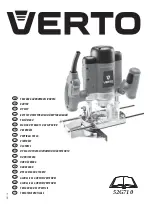
3Com Switch 8800 Configuration Guide
Chapter 18 RIP Configuration
18-9
broadcast packets. In addition, this mode can also make the hosts running RIP-1 avoid
incorrectly receiving and processing the routes with subnet mask in RIP-2. When an
interface is running in RIP-2 broadcast mode, the RIP-1 packets can also be received.
Perform the following configuration in interface view:
Table 18-12
Specify RIP version of the interface
Operation
Command
Specify the RIP version as RIP-1 for the interface
rip version 1
Specify the RIP version as RIP-2 for the interface
rip version 2
[
broadcast
|
multicast
]
Restore the default RIP version running on the
interface
undo rip version
By default, the interface receives and sends the RIP-1 packets. It will transmit packets
in multicast mode when the interface RIP version is set to RIP-2.
18.2.12 Configuring RIP Timers
As mentioned previously, RIP has three timers: Period update, Timeout and
Garbage-collection. Modification of these timers affects RIP convergence speed.
Perform the following configuration in RIP view.
Table 18-13
Configure RIP timers
Operation
Command
Configure RIP timers
timers
{
update
update
-
timer
-
length
|
timeout
timeout
-
timer
-
length
} *
Restore the default settings of
RIP timers
undo
timers
{
update
|
timeout
} *
The modification of RIP timers is validated immediately.
By default, the values of Period Update and Timeout timers are 30 seconds and 180
seconds respectively. The value of Garbage-collection timer is four times that of Period
Update timer: 120 seconds.
In fact, you may find that the timeout time of Garbage-collection timer is not fixed. If
Period Update timer is set to 30 seconds, Garbage-collection timer might range from 90
to 120 seconds.
Before RIP completely deletes an unreachable route from the routing table, it
advertises the route by sending four Period Update packets with route metric of 16, so
as to acknowledge all the neighbors that the route is unreachable. As routes cannot
















































